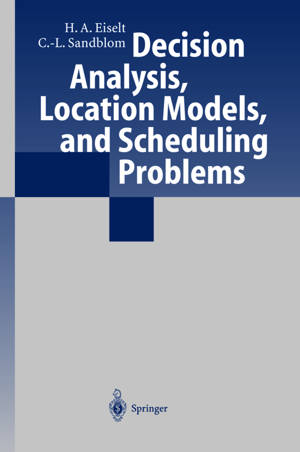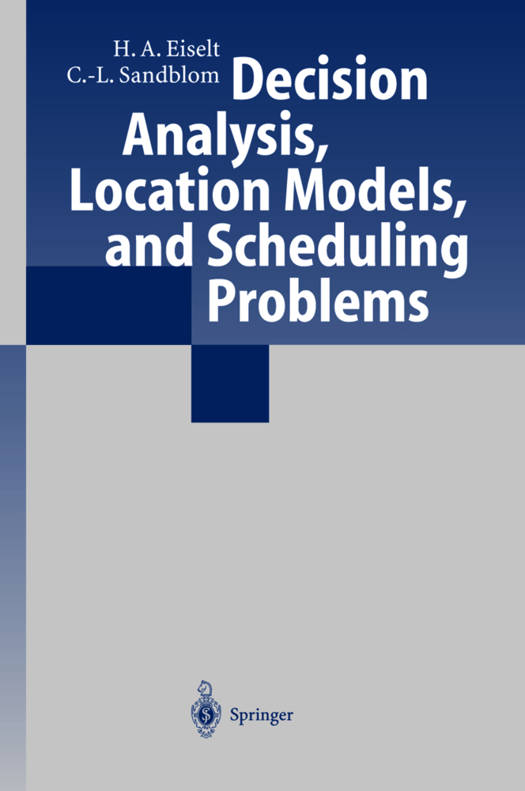
- Afhalen na 1 uur in een winkel met voorraad
- Gratis thuislevering in België vanaf € 30
- Ruim aanbod met 7 miljoen producten
- Afhalen na 1 uur in een winkel met voorraad
- Gratis thuislevering in België vanaf € 30
- Ruim aanbod met 7 miljoen producten
Decision Analysis, Location Models, and Scheduling Problems
H a Eiselt, Carl-Louis SandblomOmschrijving
A unified treatment of decision analysis, location theory and scheduling, with topics ranging from multicriteria decision-making, multiattribute utility theory, classical decision analysis and game theory, to location and layout planning, and to project and machine scheduling. While the emphasis of the book is on models and applications, the most important methods and algorithms, exact as well as heuristic, are described in detail and illustrated by numerical examples. The formulations and the discussion of a large variety of models provides insight into their structures, allowing the user to better evaluate the solutions to the problems.
Specificaties
Betrokkenen
- Auteur(s):
- Uitgeverij:
Inhoud
- Aantal bladzijden:
- 457
- Taal:
- Engels
Eigenschappen
- Productcode (EAN):
- 9783540403388
- Verschijningsdatum:
- 27/10/2003
- Uitvoering:
- Hardcover
- Formaat:
- Genaaid
- Afmetingen:
- 156 mm x 234 mm
- Gewicht:
- 839 g

Alleen bij Standaard Boekhandel
Beoordelingen
We publiceren alleen reviews die voldoen aan de voorwaarden voor reviews. Bekijk onze voorwaarden voor reviews.








